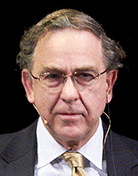In an era when news outlets are losing staff and statehouse coverage is getting skimpy, publications in several states are teaming up to cover news in their state capitals, Christine Schmidt reports for the Nieman Journalism Lab at Harvard University.
Capitol News Illinois, launched in January by the Illinois Press Foundation, counts 250 newspapers in its membership. Collaboration helped everyone, according to Sam Fisher, head of the Illinois Press Association (IPF is the IPA's educational arm). "We were looking at which parts of the state [were news deserts] to see what we could do, but the biggest news desert was at the Illinois capital," Fisher told Schmidt. "That particular news desert impacted every newspaper, every area, every corner of the state of Illinois."
Most states have similar problems. The number of full-time statehouse reporters in the U.S. dropped by 35 percent between 2003 and 2014, according to a Pew Research Center analysis. In 2014, seven in 10 newspapers that undergo circulation audits (about two-thirds of the dailies) had no full-time statehouse reporter, and that number is likely higher today, Schmidt reports. Efforts like Illinois' also serve weeklies, few of which use wire services and don't send reporters to capitals regularly.
Other states have created similar initiatives, such as "the Oregon Capital Bureau, started by three local publishers; Spotlight PA/PA Post, foundation-supported collaborations between Pennsylvania’s local outlets of various media; and the 11-year-old combined Miami Herald-Tampa Bay Times statehouse bureau as the latest united-front state government coverage," Schmidt reports. "CNI is part of IPF and its content can freely be used by any of its member newspapers, while the Oregon and Florida collaborations are between individual for-profit news organizations and Pennsylvania’s was spurred on by a group of foundations."
The statehouse bureaus are producing high-value stories and plenty of them; Fisher said as many as a quarter of CNI's stories ends up on local papers' front pages, and the bureau produces four to eight stories per day, Schmidt reports. CNI is considering collaborating with local TV news and radio.
Capitol News Illinois, launched in January by the Illinois Press Foundation, counts 250 newspapers in its membership. Collaboration helped everyone, according to Sam Fisher, head of the Illinois Press Association (IPF is the IPA's educational arm). "We were looking at which parts of the state [were news deserts] to see what we could do, but the biggest news desert was at the Illinois capital," Fisher told Schmidt. "That particular news desert impacted every newspaper, every area, every corner of the state of Illinois."
Most states have similar problems. The number of full-time statehouse reporters in the U.S. dropped by 35 percent between 2003 and 2014, according to a Pew Research Center analysis. In 2014, seven in 10 newspapers that undergo circulation audits (about two-thirds of the dailies) had no full-time statehouse reporter, and that number is likely higher today, Schmidt reports. Efforts like Illinois' also serve weeklies, few of which use wire services and don't send reporters to capitals regularly.
Other states have created similar initiatives, such as "the Oregon Capital Bureau, started by three local publishers; Spotlight PA/PA Post, foundation-supported collaborations between Pennsylvania’s local outlets of various media; and the 11-year-old combined Miami Herald-Tampa Bay Times statehouse bureau as the latest united-front state government coverage," Schmidt reports. "CNI is part of IPF and its content can freely be used by any of its member newspapers, while the Oregon and Florida collaborations are between individual for-profit news organizations and Pennsylvania’s was spurred on by a group of foundations."
The statehouse bureaus are producing high-value stories and plenty of them; Fisher said as many as a quarter of CNI's stories ends up on local papers' front pages, and the bureau produces four to eight stories per day, Schmidt reports. CNI is considering collaborating with local TV news and radio.
























